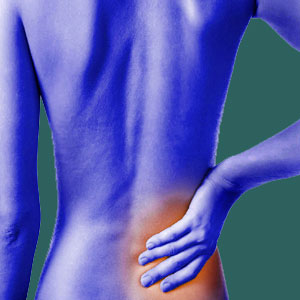
Physical therapy for sacroiliac pain is one of the most common and effective treatments for several SIJ diagnoses. In fact, PT might be the very best approach to care for virtually all cases of sacroiliac joint dysfunction that are caused by ligament and muscle imbalance problems. While physical therapy is often considered a symptomatic treatment for most forms of back pain, it certainly qualifies as a curative intervention for many SIJ scenarios.
Physical therapy always earns our respect and recommendation as an all-natural, constructive treatment. However, when it stands little hope of addressing the underlying cause of pain, it can simply be part of the money-generating practice used increase therapeutic profitability prior to surgical intervention. We have written much about the benefits and limitations of physical therapy in the past, but now focus on its promising applications for sacroiliac joint conditions.
This dissertation examines the role of PT in the treatment of a diversity of SIJ disorders. We will present an objective analysis of the treatment, as well as provide some alternatives that might work better for some patients.
Physical Therapy for Sacroiliac Explained
Physical therapy consists of various forms of exercise and stretching techniques that are designed to mobilize the sacroiliac joint, strengthen it and promote healing of injury to the tissues. Physical therapy is a true hands-on healing modality and its providers are some of the most knowledgeable professionals when it comes to the true workings of the human anatomy. Patients generally tend to bond closely with their physical therapists and PTAs, since they work closely together and must trust them implicitly to work through often serious pain issues.
Patients will be instructed to perform general and joint-specific activities that are geared towards helping the patient to become stronger and more flexible, while simultaneously reducing pain from the affected joint. This is not to say that therapy will not be painful, since it often is, particularly at the beginning. However, the pain is not dire and is generally considered “constructive discomfort” that will only have a short duration until the joint acclimates to active treatment. Professional PT is usually a short-term modality, often being prescribed for 6 to 30 weeks, depending on the nature of the specific SIJ problem being treated. However, patients might be instructed to perform exercises or stretches on their own following the end of PT sessions, as well as in between sessions.
Physical Therapy for Sacroiliac Diagnoses
PT is considered the industry standard treatment for a wide range of SI joint diagnoses. In fact, we rarely see any case that is not immediately qualified for PT. However, having studied SIJ disorders on a clinical level, we have made some enlightening discoveries regarding sweeping variations in efficacy from one diagnosis to another:
Physical therapy provides the very best curative results for muscle imbalances that act on the soft tissues of the sacroiliac. Most muscle imbalance conditions can be rectified within a few weeks time and enact complete amelioration of pain. Often postural and/or ergonomic evaluation is also included in PT sessions for muscle imbalance patients.
Physical therapy provides excellent outcomes for hypermobility patients who can benefit from ligament and muscular strengthening techniques to re-establish structural integrity in the SIJ. Not all hypermobility concerns can be adequately addressed this way, since laxity due to multiple pregnancies and obesity might require special interventions to resolve.
Physical therapy is moderately effective for resolving hypomobile SI joints caused by some particular soft tissue concerns. Most overly-tense sacroiliac structures caused by injury, and some other circumstances, can be successfully treated using PT alone. PT is far less effective for curing hypomobility of the SI due to structural changes in the joint, such as those enacted by rheumatoid arthritis, ankylosing spondylitis or extreme osteoarthritis.
PT is the least effective for most forms of inflammatory sacroiliitis, infection-related joint problems and some other particular degenerative conditions.
We are still evaluating the effectiveness of PT for post-lumbar fusion patients who subsequently develop SI joint pain. Some patients seem to respond relatively well to PT, while others tend to suffer often startling symptomatic escalation. Responsiveness seems to be on a case-by-case basis.
Physical Therapy for Sacroiliac Alternatives
Many patients have limited access to healthcare due to financial constraints and a lack of insurance coverage. For these patients, we provide some alternatives to physical therapy that can be just as effective as professional sessions. Alternatives are also important of patients who finish PT, but still have minor symptoms or those who simply want to try something different due to disappointing results or suspected misdiagnosis.
Most patients can consult with a physical therapist and learn to build their own program to perform at home. For motivated patients, this can involve a limited financial obligation, followed by self-managed exercise and stretching. We do not advise trying the design your own program without the benefit of professional physical therapist, unless you are highly qualified in anatomy, fitness training or other related field of expertise. Patients might also try participation in activities that will be beneficial to the SI joint, including yoga, tai chi, Pilates or other pastime. These can be complementary to professional PT, replacements for PT or extensions of physicality after finishing PT.
Patients who have other reasons to pursue alternative therapeutic possibilities are recommended to explore acupuncture, massage or chiropractic in addition to alternative exercise and stretching techniques. Patients are cautioned to avoid drugs whenever possible, but prolotherapy injections might actually increase the effectiveness of exercise considerably for some diagnoses, such as SIJ dysfunction due to hypermobility.
Sacroiliac Joint Pain > Sacroiliac Treatment > Physical Therapy for Sacroiliac





